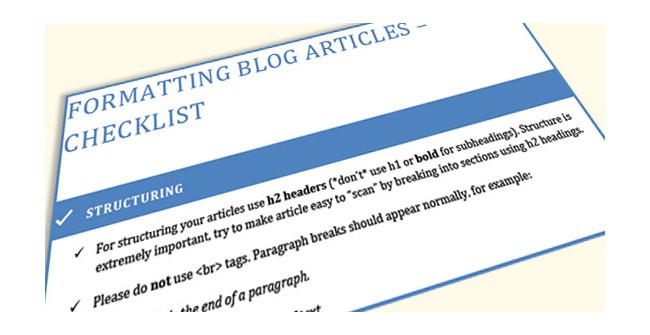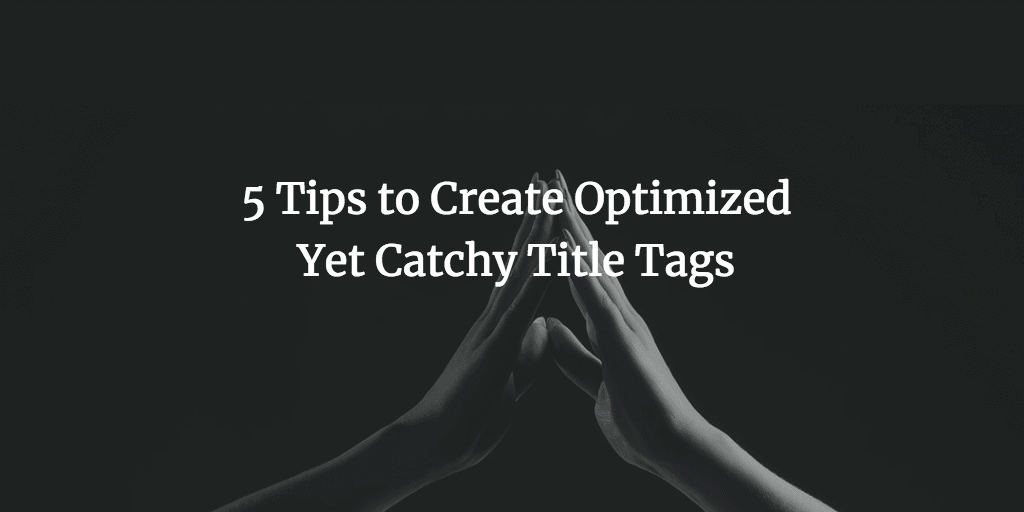There is a fine balance between a catchy title tag and an optimized one. It isn’t always easy to get the two just right and provide both, with one not outweighing the other. Some people aren’t even sure of how to use tags in the first place, which is understandable. The average blog owner has started their site out of a love of the subject and content, not with any technical chops backing it up. Luckily, the process is pretty easy. All you need are these five tips, and you will have interesting and catchy, yet search engine optimized title tags that will bring people to your site and really help you out in results.
1. Know What Title Tags Are
Go to an already published post on your blog and open it up in draft. Click on the HTML tab and you will see the breakdown of all of the text you have provided, including enhancements like bold headers. The HTML section of any post or page on a website is where you will want to place the meta tags of your post. These will be read by crawlers and so affect the placement of your page in search engine results. The most important meta tag is going to be your title tag. It will look like this: <title>This Is My Title and It Is Awesome!</title>. You should write this title carefully, as it needs to be written for the appeal of readers while still showing the fundamental core of what the page is about.
2. Watch The Length
I have seen some ridiculously long title tags as people try to stuff the description (a totally separate meta tag type) into the title itself. Don’t do that. It looks bad and won’t show up properly in search engine results, or space itself well on the top of the browser window. Your title length should be more than twenty characters, but no more than seventy. I would try to aim somewhere in the middle, around fifty to fifty-five characters long. This includes spaces and punctuation.
Please download the free blog post formatting cheatsheet for more working and formatting tips!

3. Properly Implement Keywords
Here is the controversial part. A lot of people are saying to not even bother using keywords for your title tags because it will come off as spammy. I would disagree. I think keywords are important, but only in the context of the flow of the content. In other words, it should naturally fit into the title you have chosen. This article is about title tags. I did include title tags in the title itself, but only because it naturally belongs there. You should use the same tactic, and never try to shove in a keyword that doesn’t fit, or just for the sake of catching crawler’s attention. It will have the opposite affect, and your could be bumped down in your ranking.
Bonus tip: Try this tool for keyword research .
4. Add In Your Brand Name
Putting in the name of your brand, website or company can be a good way of adding in that extra oomph to the tag. Just add it to the end, after you have already put in the title itself. There is some debate about whether this should be done, and I think if your primary marketing focus is branding in general, or if you directly sell anything, it should definitely be done. If those aren’t your aims then you can leave it out if you choose, or if you need the character space.
5. Ask Yourself “Would I Click On This?”
We have covered the optimization part, now we need to look at making it catchy. This comes down to one step in the process, and that is to be honest about whether or not you would click on a link based on the title. You can feel free to ask others the same question. If the answer is ‘yes’, you are golden. If it is ‘no’, you need to change it. Try to make it sensational enough to catch the eye, but clear enough that it tells what will be on the page the moment the person clicks on it.
Conclusion
Now you know what a meta title tag is, why it’s that important and how to do keyword research so that you know what it’ll take to rank number One for a particular term. Believe it or not, but many site owners don’t really follow these best SEO practices to rank as they would wish to. Be different!
Do you have a tip for optimizing or making a title tag catchy? If you do, be sure to let us know in the comments.





